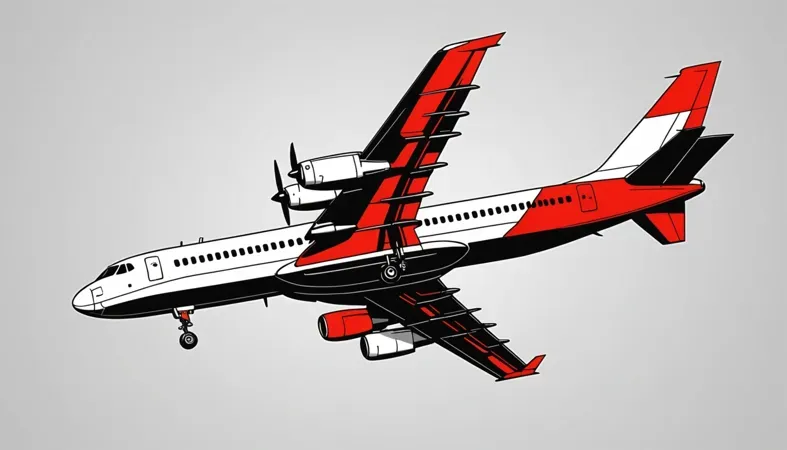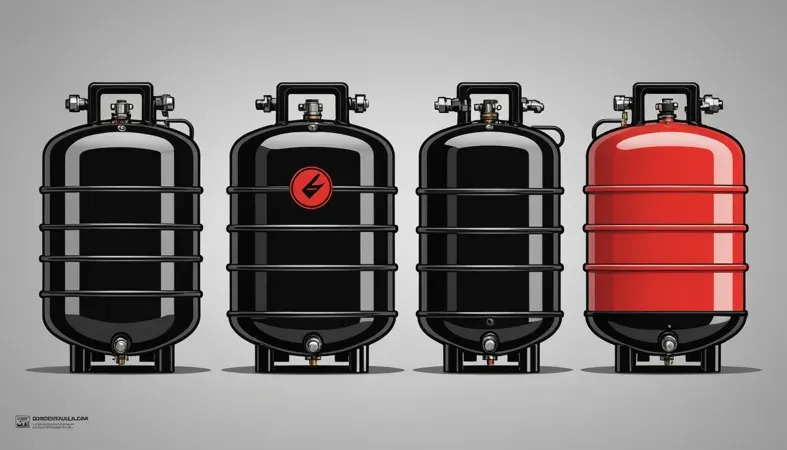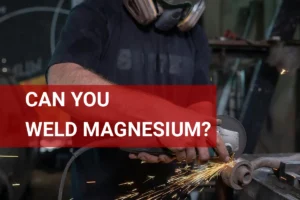What Gas for TIG Welding? Discover Essential Gas Types, Usage Tips, and Alternatives.
Published on: February 5, 2025 | Last modified: March 4, 2025
By: Joe Carter
I’ve been asked many times about what gas for tig welding. Choosing the right gas is important because it directly affects the quality of your welds. From my experience, using the correct gas can mean the difference between a strong joint and one that fails.
In this article, you’ll learn about what gas is used for TIG welding, how TIG welding gas works, various types of welding gas, necessary steps to prepare for TIG welding, factors influencing gas selection, unique issues, aftercare tips, applications, and alternatives to what gas for TIG welding. We’ll also tackle frequently asked questions to deepen your understanding.
Contents
- What Gas is Used for TIG Welding?
- How Does TIG Welding Gas Work?
- Types Of Welding Gas
- Common TIG Welding Gas Mixes and Their Uses
- Factors Influencing Gas Selection
- Unique Issues
- Aftercare, Inspection, and Advanced Tips for TIG Welding
- What Are the Alternatives for Gas for TIG Welding?
- Frequently Asked Questions (FAQs)
- Conclusion
- Additional Reading
What Gas is Used for TIG Welding?
Argon is the primary gas for TIG welding. It’s used for its stability and ability to shield the weld area from contamination. Typical applications include stainless steel and aluminum, where clean, precise welds are crucial.
How Does TIG Welding Gas Work?
TIG welding, or Tungsten Inert argon gas welding, uses a specific gas to shield the weld from contamination. The primary gas is argon, often mixed with a small amount of helium for better arc stability. Argon is preferred because it’s inert, meaning it won’t react with the molten metal. Using high-purity argon (99.95% Or Higher) helps prevent defects and achieves a cleaner finish.
The quality of the gas directly affects your weld’s quality. When welding steel, the right gas mix prevents oxidation, which is crucial for strong joints. If you’re wondering what gas is used for TIG welding, it’s nearly always argon.
Here’s how to set up your TIG welder: check the cylinder for leaks, and use a regulator designed for argon. Failing to do so can lead to inconsistencies in your bead profile and overall weld quality. Trust me; nobody wants a weld that looks like a zigzag!
Types Of Welding Gas
What types of gases do you use for TIG welding?
Argon
Argon is a common shielding gas, known for its inert properties. It’s mainly used for TIG welding, especially with steel and aluminum. For effective use, set your argon regulator to about 15-20 cubic feet per hour (CFH) for a clean, precise weld.
Helium
Helium provides deeper penetration and speeds up the welding process. It’s ideal for thicker materials like stainless steel. Mix it with argon and set your flow rate between 25-40 CFH for better coverage.
When dealing with thinner metals, adapting your technique is crucial for success. Learn practical methods by checking out how to weld thin metal.
Argon-helium Mixtures
This blend combines the advantages of both gases, improving arc stability and speed. It’s especially useful for welding aluminum. For optimal results, mix 70% argon with 30% helium and maintain a flow rate of 20-30 CFH.
Hydrogen
Hydrogen can be added to argon for specific applications, like producing clean stainless steel welds. It helps reduce oxidation. For safe use, limit its concentration to 5% in your shielding gas mix, and follow the manufacturer’s advice on flow rates.
Carbon Dioxide
While primarily associated with MIG welding, carbon dioxide (CO2) is sometimes used with argon for specific TIG applications. It’s inexpensive and increases heat. To use it wisely, keep CO2 content below 15% and adjust your flow to balance heat effectively.
We’ve wrapped up the various types of welding gas here. Next up, we’ll look at common TIG welding gas mixes and their uses.
Common TIG Welding Gas Mixes and Their Uses
Understanding gas mixes can enhance your welding experience significantly. Here’s a breakdown of common mixes and when to use them:
| Gas Mix | Composition | Preferred Applications | Flow Rate (CFH) |
|---|---|---|---|
| Pure Argon | 100% Argon | Steel and Aluminum welding | 15-25 |
| Argon-Helium | 75% Argon, 25% Helium | Thin materials, Aluminum welding | 20-30 |
| Argon-Hydrogen | 95% Argon, 5% Hydrogen | Stainless Steel, Clean welds | 10-15 |
| Argon-CO2 | 85% Argon, 15% CO2 | Specialized TIG Applications | 10-20 |
Each mix serves a unique purpose. Selecting the right combination can make a big difference in your weld quality. For instance, many prefer argon-helium mixes for welding thinner aluminum, while stainless steel often benefits from an argon-hydrogen mix. Choosing wisely helps enhance your results! You should now have a good understanding of TIG welding gas mixtures and their applications. A critical step in many welding processes is the hot pass which ensures proper penetration and fusion of the weld layers. Learn more about what a hot pass is.
Select Appropriate Gas
For TIG welding, use argon gas as it provides excellent shielding for most metals, including aluminum and stainless steel. For thinner materials, opt for pure argon or a mix of 25% argon and 75% helium for better heat conduction. For aluminum, pure argon is essential to prevent oxidation during the welding process. Select the gas type based on the metal you’re working with. Use pure argon for steel and aluminum, while a helium mix can enhance penetration and provide a smoother finish. I once tried using CO2, and it resulted in defects—save that for MIG welding! Choosing the right amperage for welding rods is crucial to achieving high-quality welds, and understanding how many amps for 3/32 welding rod is vital.
Adjust Settings
TIG welding requires knowing your machine settings! For argon, adjust your regulator to 15 psi (Pounds Per Square Inch) for most applications. Pay attention to your amperage—you generally need 1 amp per 0.001 inches (0.0254 Mm) of thickness for steel and aluminum. Setting it too high can cause melt-through, while too low could lead to poor penetration. If you’re welding stainless steel, you may need to increase the heat—sometimes by 10-20 amps over plain steel. Finding that sweet spot takes practice but will save you time later! Familiarity with nuances makes a huge difference. Mastering different welding techniques, like how to forge weld, enhances your skills significantly.
Practice Techniques
Now it’s time to practice! Find scrap pieces that mimic your project’s dimensions. Control your travel speed while maintaining an average arc length of about 1/8 inch (3 Mm). A steady hand keeps the puddle consistent, so be mindful of your body positioning and torch angle! Sometimes, I adjusted the angle too much, which ruined the arc consistency. Keep your tungsten sharp—it’s a game-changer! Practice makes perfect; spend time experimenting with different settings until you find your rhythm. For those curious about medical procedures, learn if a welder can get an MRI.
Next, let’s look at the factors affecting gas choice.

Factors Influencing Gas Selection
What factors influence your choice of gas for TIG welding?
Material Thickness
Thicker materials require a higher flow rate of shielding gas. As thickness increases, you may need 15 to 25 cubic feet per hour (Cfh) of argon for optimal shielding.
Type Of Base Material
Different base metals require specific gases. For example, stainless steel needs pure argon, while aluminum benefits from a mix of argon and helium for better heat input.
Welding Position
Adapt your gas flow based on the welding position. In overhead welding, you might need a higher flow to prevent coverage issues from gravity.
Desired Weld Appearance
Your gas choice affects the weld’s smoothness. A mixture of 75% argon and 25% helium generally enhances arc stability and bead appearance.
Environmental Conditions
Wind and drafts can scatter shielding gas. In outdoor conditions, use a higher flow rate or a gas with heavier particles, like argon or a mixture, to protect the weld area.
We have now covered factors affecting gas choice. Next, we will examine specific challenges related to gas selection.

Unique Issues
Now, let’s look at specific problems related to welding gas.
Gas Contamination Risks
Welding gas can get contaminated by moisture or dirt. Use a gas analyzer to check for oversaturation. Replace or filter the gas for clean results.
Flow Rate Calibration
Welding gas flow rates often fluctuate. Check your flow meter regularly and adjust it between 10-20 cubic feet per hour (CFH) for optimal performance.
Heat Control Challenges
Welding gas can cause heat fluctuations. Monitor your torch and stay within 100-200 amps for consistent results. Adjust gas settings as needed.
Arc Stability Problems
Fluctuating welding gas pressures cause arc instability. Identify this by erratic arcs. Stabilize by maintaining proper pressure at 10-15 psi and checking hoses.
Material Compatibility Concerns
Welding gas can react differently with materials. Check the gas type—argon or helium is ideal for steel—and confirm compatibility to avoid weak beads.
Aftercare, Inspection, and Advanced Tips for TIG Welding
Here are essential aftercare, inspection, and advanced tips for choosing the right gas in TIG welding.
Aftercare Recommendations
After setting up your rig with Argon gas (Ar), purge your torch properly. Use about 7-14 L/min (15-30 CFH) to remove contaminants. Always keep your cylinder upright and secure it to prevent falls or damage; a half-full cylinder is especially vulnerable. Regularly check for leaks with soapy water—it’s a quick and effective method.
Inspection Tips
Inspect the regulator best suited for your gas; I prefer the Harris 601 for its durability. Check gauges every time before starting; they should show a healthy 2000 psi (13790 Kpa) before use. Look for signs of wear on hoses; aged hoses can’t handle high pressure and pose risks of accidents.
Advanced Insights
If you’re experienced with TIG welding, consider using a gas blend instead of pure Argon. Try 75% Argon and 25% Helium for better arc stability—especially important on thin materials. Adjust the gas flow based on the position. Ideal settings vary; maintain between 10-15 L/min (20-32 CFH) for aluminum and different settings for steel.
What Are the Alternatives for Gas for TIG Welding?
When looking for alternatives, you might consider using helium. It’s great for welding aluminum. Then there’s a mix of argon and helium, which works well for thicker materials, providing a hotter arc.
Another solid option is to explore using pure argon if you’re welding stainless steel. Some even suggest a 75/25 argon/CO2 blend for specific projects. Each choice can optimize your setup based on your materials, ensuring a smooth finish.
Frequently Asked Questions (FAQs)
Here are some questions I typically get asked about welding gases and processes.
What is the Best Gas to TIG Weld With?
Yes, the best gas to TIG weld with is argon. Argon provides a stable arc and is inert, reducing contamination. It also yields cleaner welds, making it ideal for aluminum, stainless steel, and other metals, particularly when considering the various options available for welding gas.
When working with different welding methods, mastering various joint techniques is crucial. Discover effective techniques for welding edge joints to enhance your skill set and create robust welds.
Do You Use Argon or CO2 for TIG?
Yes, you use argon for TIG welding; CO2 isn’t suitable. Argon maintains an even heat and better arc stability compared to CO2, minimizing weld defects and ensuring high-quality joints.
Can You Use the Same Gas for TIG and MIG Welding?
No, you can’t use the same gas for TIG and MIG welding. TIG welding primarily uses argon, while MIG welding typically requires a mix of argon and CO2 for better penetration and bead shape.
What Gas for Aluminum TIG?
For aluminum TIG welding, you should use pure argon gas. It prevents oxidation and ensures a smooth, clean weld, which is crucial since aluminum is more reactive than other metals.
What Kind Of Gas is Needed for Welding Stainless Steel?
You need a mix of argon and helium for welding stainless steel. This combination increases arc stability and heat input, which is critical for thicker materials.
What is the Difference Between TIG and MIG Welding Gases?
The difference between TIG and MIG welding gases lies in their composition. TIG primarily uses inert argon gas, providing a stable arc, while MIG employs a mix of argon and CO2, which enhances weld penetration. Understanding the nuances of these techniques is crucial, especially when learning how to use a welder.
Is It Possible to Use Helium in TIG Welding?
Yes, using helium in TIG welding is possible. Helium increases heat input and ensures better penetration, especially on thick materials. However, it’s often combined with argon to balance cost and performance.
Can You Mix Gases for TIG Welding?
Yes, you can mix gases for TIG welding. Blending argon with helium can improve heat input, while mixing argon with hydrogen enhances welding speed, depending on the material being welded.
Conclusion
We covered what gas is used for TIG welding, how TIG welding gas works, the types of welding gas, steps to prepare for TIG welding, factors influencing gas selection, unique issues, aftercare, inspection, advanced tips, applications, and alternatives. You now have a solid understanding of each item discussed. We also clarified frequently asked questions regarding welding gases.
So, what gas for TIG welding? In simple terms, argon is the go-to choice due to its effectiveness at shielding the weld. To get a clean weld, you typically need about 15-20 cubic feet (425-566 Liters) of argon per hour. If you’d like more guidance or information on what gas you need for TIG welding, don’t hesitate to contact me.
For those who want to expand their knowledge and dive deeper into the world of welding, feel free to check out What is Welding.
Additional Reading
- American Welding Society. (2020). AWS Welding Handbook: Welding Science and Technology (Vol. 1). Miami, FL: American Welding Society.
Joe Carter is a retired welding professional with over 40 years of hands-on experience in the industry, spanning ship repair, structural welding, and even underwater projects. Joe is a master of MIG, TIG, and Stick welding. Passionate about mentoring the next generation of welders, Joe now shares his decades of expertise and practical insights to help others build rewarding careers in welding.
American Welding Society, Argon, MIG Welding, Shielding Gas, Steel And Aluminum Welding, TIG Welding, Welding, Welding Gas, Welding Techniques







